The original 1858 Remington New Army was produced from 1858 until 1875 and was originally a percussion revolver. In 1868, the 1858 Remington New Army was redesigned to fire metallic cartridges, five rounds of .46 caliber, and was eventually chambered in .45 Long Colt and also .44-40 by gunsmiths.
The 1858 Remington New Army is a large revolver, weighs almost three pounds, and with an eight inch barrel and quite well suited for cavalry and long-distance work (it was sighted in a seventy-five yards). It was a robust revolver and served well in numerous wars, including the American Civil War and in other countries.
It is recorded that William F. “Buffalo Bill” Cody used an ivory-handled New Model Army .44, serial number 73,293, from 1863 until 1906. He gave it to his ranch foreman with a handwritten note which said that, “It never failed me.”
 While I could never enjoy the ownership of an authentic 1858 Remington New Army Conversion revolver, Uberti has brought a replica of one to the table and a fine replica it is – with one caveat that I will cover later in this review.
While I could never enjoy the ownership of an authentic 1858 Remington New Army Conversion revolver, Uberti has brought a replica of one to the table and a fine replica it is – with one caveat that I will cover later in this review.
I have always loved the firearms from the Civil War era and have fired a Navy .36 caliber percussion revolver (which was also a replica) that belonged to a friend, who was also a replica of a Confederate soldier once he got into costume. Although percussion pistols are fun to shoot, they also get very dirty (actually filthy) when doing so and require an enormous amount of cleaning to get them into pristine shape. I came to appreciate revolvers that fired cartridges.
When Sturm Ruger introduced the Ruger Old Army revolver around 1972, my interest in things cap-n-ball was again aroused. Ruger chose to manufacture a revolver of my liking and we know how robust Ruger firearms are. Unfortunately, Ruger departed from the original design greatly and the Ruger Old Army was more like a modified Ruger Blackhawk with cap-n-ball fittings and a 7.5-inch barrel. I was disappointed with Ruger’s attempt, but they sold well and can still be found today.
Uberti has been manufacturing replicas of early firearms for quite a while and have a reputation of being as close to the original design but with more modern steel and manufacturing. My Son-In-Law had purchased one of their “Cattleman” 1873 Colt Peacemaker replicas and I was pleasantly surprised at the quality of the revolver and the way it shot. I was not; however, in the market for another single-action revolver since I already had a couple of Ruger Blackhawks chambered in .38 special/.357 magnum chambering and a Ruger Super Blackhawk in .44 special/.44 magnum chambering. I have; however, always kept in mind the Uberti name should the ‘want’ arise.
Replicas of the 1858 Remington New Army revolver have been used in several Clint Eastwood films like “Pale Rider” and in the film “Outlaw Josie Wales” Eastwood used a 1860 New Army percussion revolver and in some scenes the 1858 Remington New Army Conversion. The spark ignited in me to acquire one of these replicas. The 1858 Remington New Army Conversion revolver is definitely not a “need” as there are more modern firearms to fill a need than I could possibly need. While you see a lot of reproductions of the Colt “Peacemaker” you do not see replicas of the 1858 Remington New Army Conversion revolvers running around except in particular circles like Cowboy Action Shooting and Civil War reenactments. In other words, I had to have one.
A quick search of Uberti’s web site drew me to two revolver replicas; the 1858 Remington New Army Conversion and the Smith & Wesson Schofield. The top-break Schofield was way out of the range of my budget; the 1858 Remington New Army Conversion was within it and it won out. The quest to find one was on.
Researching the list of Uberti dealers I found that the LGS that I have been doing business with for about thirty years was one. Knowing that I would probably have to order an 1858 Remington New Army Conversion, I made the call. It just so happened that they had one in stock and the next morning found me on their doorstep. Although the original 1858 Remington New Army Conversion revolvers have more history than I can imagine, so did the one that I was looking at. Apparently, some boxes had been misplaced at one time and the Uberti 1858 Remington New Army Conversion was among them. Several other factors allowed me to acquire the Uberti 1858 Remington New Army Conversion at a substantially low cost.
When Remington converted the 1858 New Army revolver to fire metallic cartridges, several changes had to take place;
A shell ejector was added. The shell ejector rod has a lever that is locked into place by what used to be a loading lever. Releasing the loading lever from its front detent and moving it downward allows the ejection rod to move rearward into the chamber to push the expended shells out of the cylinder – one at a time. Unloading the revolver is only allowed at the half-cock position, which allows the cylinder to spin freely. The once loading plunger can also be used to lock the barrel into place as it would when loading a ball into the chamber, but is no longer used for that purpose.
A loading gate had to be added. The loading gate was added to prevent the metallic cartridges from exiting the cylinder.
A different means of removing/installing the cylinder pin was designed. With the loading lever released from its detent and rotated downward, the cylinder pin can be removed and installed. Essentially, the loading lever prevents the cylinder pin from moving forward under recoil.
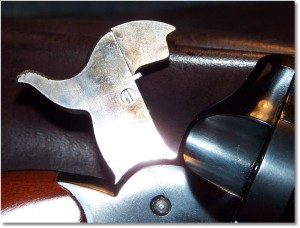
The Hammer has a Screw that operates a Hammer Drop Safety. Shades of Bill Ruger Even In Reproductions!!
A substantial hammer strikes an internal firing pin to ignite the primer and send the cartridge downrange. As with all revolvers of this type, the hammer is to rest only on an empty chamber – Bill Ruger was not around to add a hammer block but his essence is alive in this Uberti replica, and which is the only dislike I have about this firearm. Uberti has installed a hammer block into the hammer that is activated by a small screw. The screw is turned clockwise to activate the hammer bock. This screw will never be touched by a screwdriver in my hands. Unlike cap and ball models, which had safety detents built into the cylinder, this model did not. I guess that Uberti believes that we are not smarter than our fore fathers and opted to install this ridiculous safety mechanism. Any single-action shooter worth his or her salt knows that you only rest the hammer on an empty chamber; pull the hammer to the half-cock position, load one, skip one, and then load four. Then, pull the hammer all the way rearward, place a thumb on the hammer, pull the trigger and with the thumb allow the hammer to slowly come to rest on an empty chamber.
To protect the firing pin, and to prevent the firing pin from peening the inside of the frame, you should use “Snap Caps” for dry-fire practice. I like the A-Zoom brand; they chamber easily and fall from the chamber with ease. The primer material is soft, absorbs the impact of the firing pin very well, and rebounds to its original shape nicely. I have tried the Tipton brand, but the brass primer, although softer than the firing pin, deforms to a point where the snap cap is ineffective. The internal firing pin, by the way, is spring loaded.
Speaking of triggers, the Uberti 1858 New Army Conversion revolver has a crisp and consistent 2.5 pound trigger pull on my particular model. There is also no take-up in the trigger. You had better be ready to shoot when you press on this trigger. The trigger is slightly rounded with no serrations, as would be on the original. The trigger guard is pure brass, which compliments the smooth walnut grips and blued steel of the revolver.
The blued finish on the revolver is excellent with slight variances between parts of the revolver.
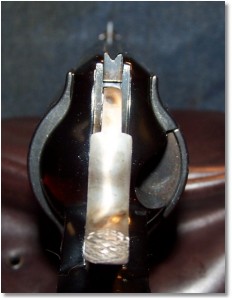
A Long 8″ Barrel Provides a Good Sight Radius. Unfortunately, the Advantage of the Long Sight Radius is offset by the Very Thin Front Sight
Sighting down this pistol is like driving a 1935 Duisenberg; the 8” barrel just seems to go on forever. The front sight, a tapered unit that is mortised into the barrel, provides a perfect sight picture when properly aligned with the notch in the top strap. Being mortised, the front sight is windage adjustable, but on a pistol of this nature some Kentucky windage seems more adequate to use.
The heavily textured hammer spur provides the necessary grip surface to ensure a positive grip on the hammer with the thumb of either hand. Pulling the hammer produces two clicks, unlike the four clicks of a Colt; half-cock and full cock. The hammer spring is substantial.
The grip panels are smooth and finely grained walnut. There is enough grip surfaces to hold onto without slipping the little finger under the grip as is found on many single-action revolvers. The grip slopes downward, inward slightly, and flares at the bottom. The grip angle would be, in my opinion, somewhere between a Bisley grip and the Colt Peacemaker grip. A grip screw holds the twp panels together nicely at the frame. The serial and catalog number is stamped into the bottom of the grip frame.
There are very few markings on the revolver; Cal .45 LC is stamped into the barrel near the frame (just to remind you of what caliber you are shooting) and STOEGER ACCOKZEK, MD-A. UBERTI-ITALY is stamped on top of the barrel near the frame. There is a stamping on the cylinder, but I have not been able to make sense of it.
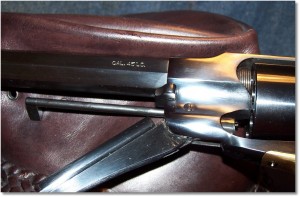
Cylinder Pin Is Held In Place By the Reloading Lever. Also note the Very Tight Forcing Cone to Cylinder Gap – .004 inches On This Revolver
One of the most important parts of any revolver is the forcing cone-to-cylinder gap (a.k.a., the flash-gap). According to my set of feeler gages, the forcing cone-to-cylinder gap on the Uberti 1858 New Army Conversion revolver is .004-inch. That’s tight, my friend!
The cylinder locks up like a drum; there is absolutely no play when the cylinder is locked in nor any when the hammer is at rest. Each chamber in the cylinder is also recessed. This is one revolver who’s manufacturer has a respect for tolerances.
Also as important as the forcing cone-to-cylinder gap on revolvers is the thickness of the chambers within the cylinder. On this particular model, chamber thickness to the outside of the cylinder is .074 inches. Each cylinder detent aligns with the center of a chamber. This means that the actual thickness of each chamber is less than .074 inches. In other words, no power loads in these chambers. Factory-loaded “Cowboy” loads are fine to use in this revolver and ammunition approved by SASS is highly recommended. Ammunition such as the following will be fine to use in this revolver:
- MAGTECH 200-grain LFN (705 fps)
- MAGTECH 250-grain LFN (761 fps)
- Winchester 250-grain LFN (750 fps)
- Black Hills 250-grain RNFP (725 fps)
- Hornady 255-grain Cowboy (725 fps)
OFF TO THE RANGE:
Since the range that I frequent is less than a mile from the gun shop, and since I had purchased a box of PROGRADE .45 Colt 250-grain Cowboy Grade at a discount at the LGS, it would only be natural of me to head to the range.
 I was not going to put a lot of lead downrange, but enough to check form and function. Twelve rounds and one IDPA target at fifteen yards told me what I wanted to know. The Uberti 1858 New Army Conversion revolver functions flawlessly. The front sight, being quite thin, was hard to see in the fluorescent lighting of the range and I wasn’t expecting any pinpoint accuracy but the Uberti 1858 New Army Conversion revolver did well enough for me to yearn for some more practice (and ammunition). The muzzle lift was negligible, due to the long 8″ barrel and the weight of the gun, and the gun was very quick to reacquire that target. I soon found out that a true 6 o’clock sight picture was needed as the first two rounds went high with my usual “center the barrel on the target” preferred sight picture. I was shooting standing and one-handed (as any single-action revolver is meant to be shot) and once the revolver told me how it wanted to be held, I was able to produce a fist-sized shot group. Needless to say that I am impressed with the Uberti 1858 Remington New Army Conversion revolver enough to warrant acquiring the 1860 Colt New Army Conversion with an open-top reproduction in .45 LC. That would be sweet!
I was not going to put a lot of lead downrange, but enough to check form and function. Twelve rounds and one IDPA target at fifteen yards told me what I wanted to know. The Uberti 1858 New Army Conversion revolver functions flawlessly. The front sight, being quite thin, was hard to see in the fluorescent lighting of the range and I wasn’t expecting any pinpoint accuracy but the Uberti 1858 New Army Conversion revolver did well enough for me to yearn for some more practice (and ammunition). The muzzle lift was negligible, due to the long 8″ barrel and the weight of the gun, and the gun was very quick to reacquire that target. I soon found out that a true 6 o’clock sight picture was needed as the first two rounds went high with my usual “center the barrel on the target” preferred sight picture. I was shooting standing and one-handed (as any single-action revolver is meant to be shot) and once the revolver told me how it wanted to be held, I was able to produce a fist-sized shot group. Needless to say that I am impressed with the Uberti 1858 Remington New Army Conversion revolver enough to warrant acquiring the 1860 Colt New Army Conversion with an open-top reproduction in .45 LC. That would be sweet!
One of my shooting buddies really liked the looks of the Uberti 1858 New Army Conversion revolver so I passed it over to him and he put five down range while smiling all the time. He was amazed at how well the revolver was balanced and especially liked the trigger pull. His comment was simply, “That was really fun!”
If you long for a single-action revolver and just want something out of the norm, the Uberti 1858 New Army Conversion revolver just might interest you. Uberti has a nice line of open-top conversions that might interest you as well – as they do me. The Uberti 1858 New Army Conversion revolver is well made and a quality piece of hardware and Uberti is known for its handiwork.
After I acquire some more “Cowboy” ammunition, it will be back to the range with the Uberti 1858 Remington New Army Conversion revolver.
Visit the Uberti web site for more information about this and other fine reproduction firearms.
- A. Uberti: http://www.uberti.com/cartridge-revolvers
![]()



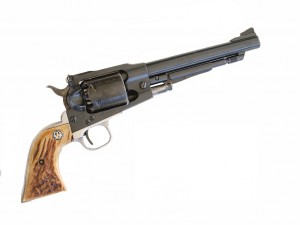
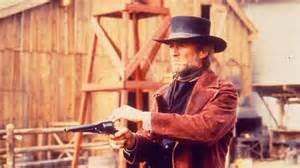
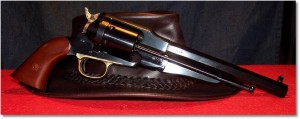

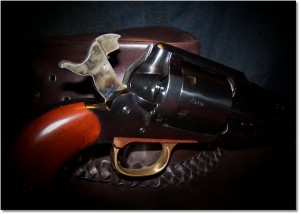
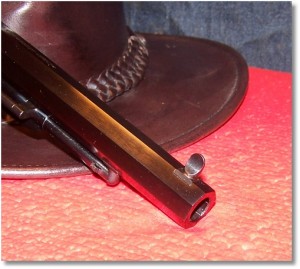

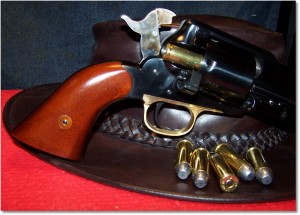
Pingback: Rediscovering (Early) Revolvers | Gun Toters